Is it time to let my Great Dane go? How do I know it’s time?
This is one of the hardest questions you’ll ever ask yourself as a pet parent. Making a decision about end-of-life care and humane euthanasia is difficult and heartbreaking. We are here for you.
We recognize that this is an extremely emotional subject, and if you are reading this you may be wondering if the time has come for your Great Dane to pass on and cross the rainbow bridge.
Our hope today is that we can provide you with some measure of comfort and confidence in your decision to let your beloved pet go. We are also including information about what to expect during the euthanasia process, which can help put your mind and heart at ease.
If you have an elderly or unwell pet and are wondering if it is time to let your Great Dane go, this post is for you. We will cover behavioral euthanasia in another post.
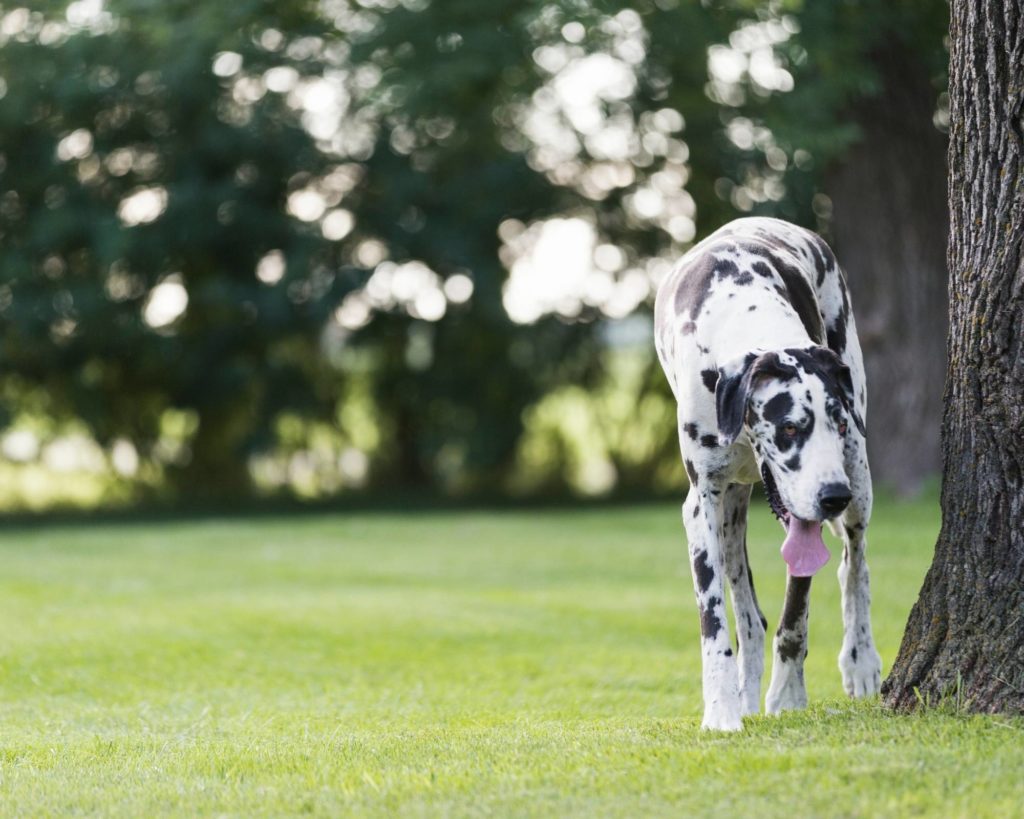
Processing the Decision to Euthanize
Nobody can make this decision for you. Recommendations from your veterinarian may be helpful, but you should never feel pressured.
It may feel like it was just yesterday that you brought your Great Dane home.
You have loved this dog and may be in disbelief that your once bouncy, active dog has lost her spark.
It’s also possible that you feel guilt, wondering if you could have done something differently, or wishing you had spent more time with your dog while he was still full of life.
Your dog does not think the way that you do!
Dogs don’t live with regret, spite, or anger.
They don’t live wondering what tomorrow brings or whether they’ve done something wrong in life.
What they do know is that you are here, right now with them and that is what matters.
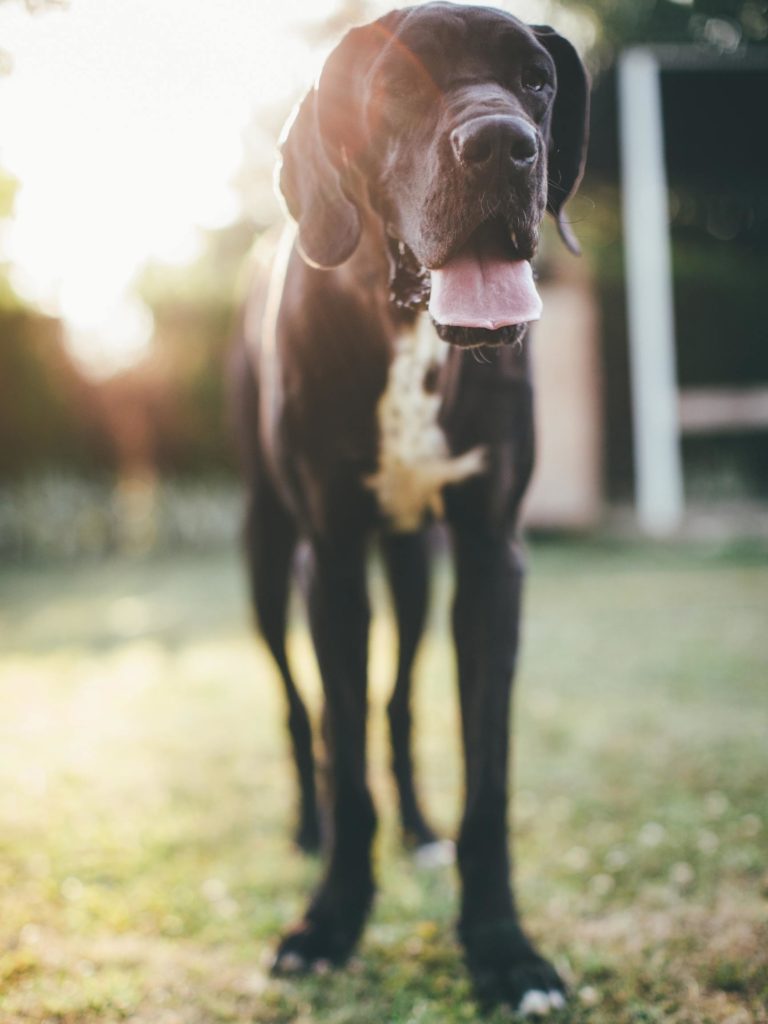
Companion Animal Hospice
Companion animal hospice is a relatively new option and can be exceptionally helpful for elderly pets or for pets with degenerative disorders such as wobblers disease.
A veterinarian technician or trained professional may be able to visit or talk with you and help provide some quality of life to your dog.
Pain medications, dietary guidance, emotional support, and orthopedic assistance can be helpful in providing and ensuring quality time with the days that you have left with your pet.
Working with a hospice and palliative care veterinary professional can make the process much easier on everybody, especially your dog. A qualified hospice professional can help guide you through making the decision to let your Great Dane go, as well.
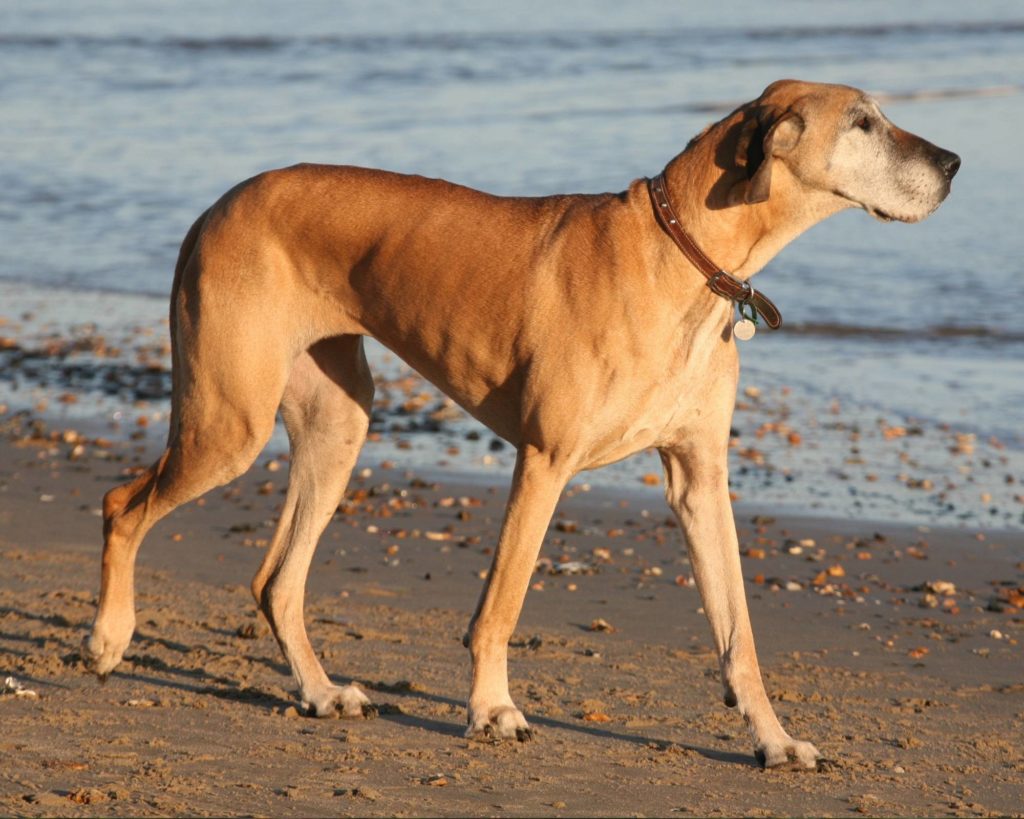
LEARN ABOUT HOSPICE CARE FOR PETS
International Association for Animal Hospice and Palliative Care
Choosing Dignity for your Pet
One of the most beautiful parts of choosing euthanasia for our pets is that we can let them go with dignity.
We can say goodbye when they are still able to function enough to have their last days with us be the best days of their lives, not the worst.
Every pet owner and every veterinarian will tell you that you will not regret making the decision too soon, but you may regret making it too late. Veterinarians consider humane euthanasia to be one of the most important gifts we can give our beloved pets.
Hold onto your dog as long as possible, but don’t be afraid to say goodbye before your dog is truly suffering.
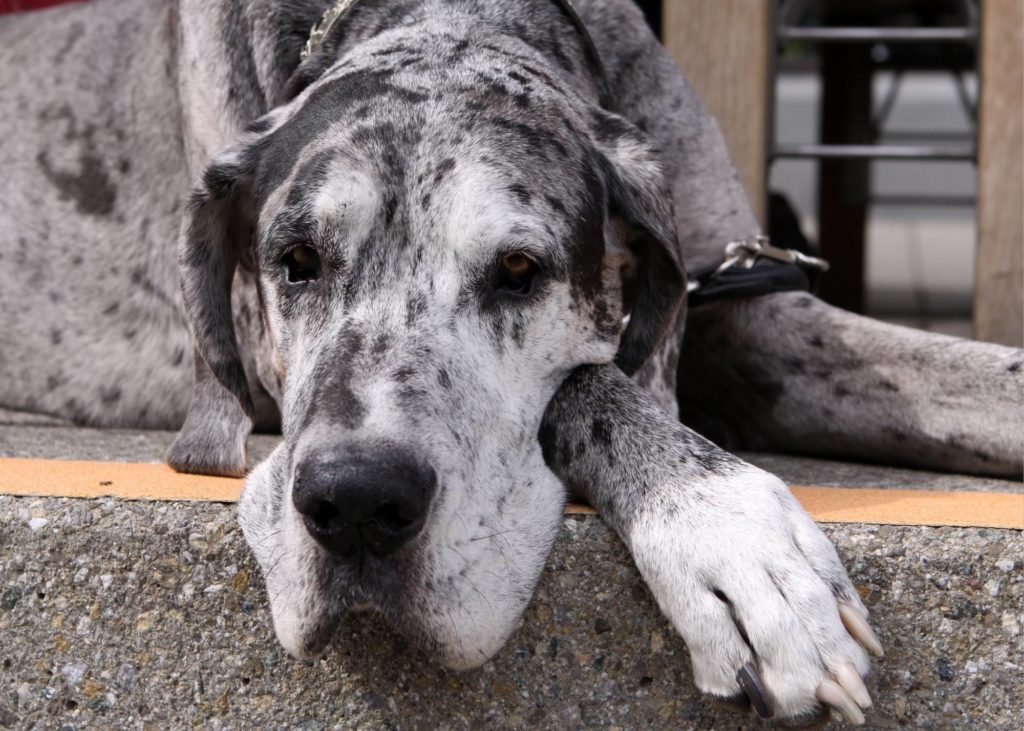
How do I know that it’s Time?
Only you will truly know the answer, but here are some common ways people determine that it’s time to let their Great Dane go:
- Your dog has stopped eating or drinking, despite receiving medical and palliative care.
- Your pet ‘tells you’. Many dog owners say their pet lets them know in some way that it’s time.
- He or she has more bad days than good days.
- You notice that your dog is clearly in pain or is suffering, despite receiving medical and palliative care.
- Your pet is unable or unwilling to get up.
- Your pet has been diagnosed with a catastrophic illness or injury and you want to avoid a traumatic ending
- You have to clean up often because your pet soils himself/herself
- Death is imminent and your dog is struggling
- You are worried that the choice to euthanize may have to be made suddenly following a sharp (and possibly traumatic) decline in health.
- Your pet is no longer responsive to you or is becoming agitated, scared or withdrawn.
The unfortunate reality is that our dogs will never live as long as we want them to. Prolonging their time with us must be done thoughtfully and humanely.
At some point, it is up to us to choose their comfort over ours; that decision can be extremely heart-wrenching, and it is ok to feel emotional.
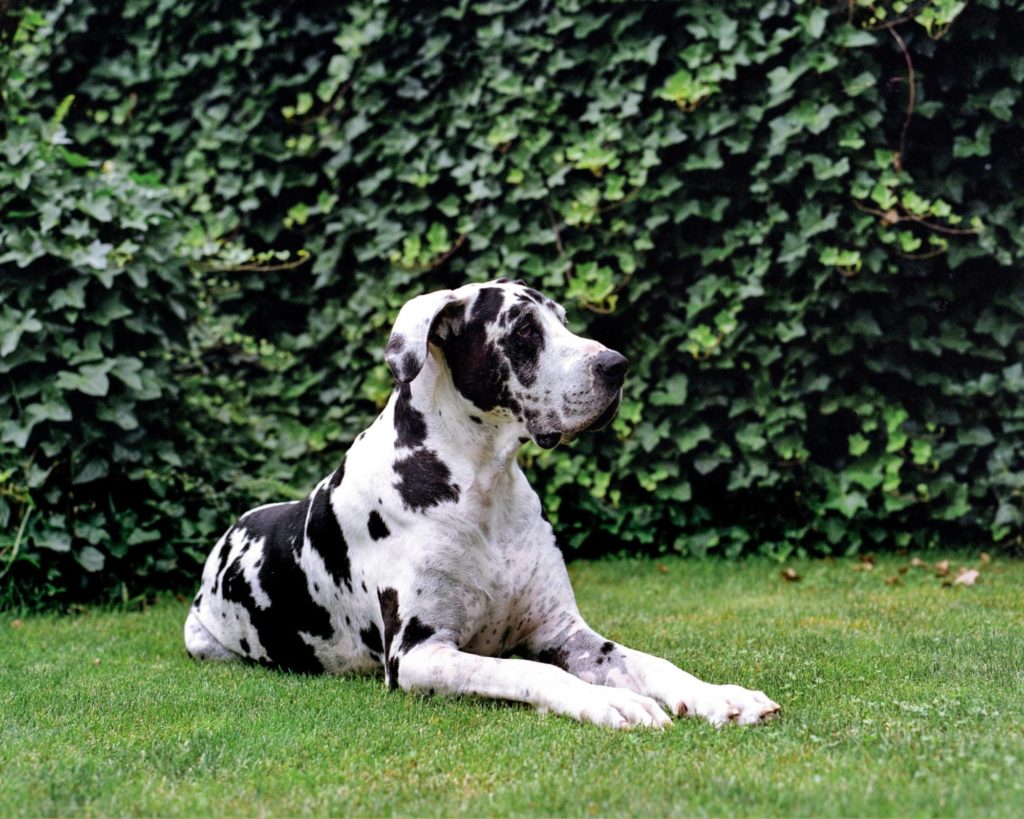
The Best Last Day Ever
Once the decision has been made, we recommend giving your Great Dane the best last day ever (assuming that your dog is in good spirits and can participate).
- Hire a professional photographer to document your dog at home and with your family.
- Visit your dog’s favorite place such as the beach or a park. Sit on a blanket and enjoy this time.
- Spend all day with your dog, even if it means laying on the floor all day long or sitting in the grass together, just watching the world go by.
- Talk to your dog. Tell stories. Look at old photos. Touch your dog all over and remember every spot, the shape of the paws and the tail. Tell your dog how special they are, and what they mean to you.
- Make a clay imprint of your dog’s paw.
- Give your dog the best treat ever. If your dog can handle it; raw meat or a hamburger are favorites.
It’s ok to be emotional and sad. Talk to your dog, they understand more than you know.

What to Expect During Euthanasia
Whenever possible, we highly recommend using an at-home euthanasia service.
Ideally, a veterinarian will come to your house or meet you in a park and help your dog make this transition on his or her own bed, in the comfort of your arms.
You will find that your veterinarian is very compassionate and will give you as much time as you need.
When you are ready, the veterinarian will often first administer a sedative.
This is done by injection and simply makes your pet comfortable and relaxed. Your pet will feel sleepy and all of the pain will be gone. Most pets quietly go to sleep.
Many people will say at this point how grateful they are to see their pet looking so comfortable, especially if the pet had been in a lot of pain or suffering.
At this time your veterinarian will allow you to use this time to say goodbye to your pet before performing the actual euthanasia.
For some pets who are especially ill, the sedative may be enough to euthanize them. However, in most cases, your sedated, sleeping pet will still be breathing.
When you say that it’s time, the actual euthanasia will be performed.
In most cases, the veterinarian will shave a bit of hair off of a leg and will insert a small catheter tube. This does not hurt your dog because your dog will be sedated.
The euthanasia drug will be administered through this tube, and the veterinarian will listen to your dogs heart.
Most dogs pass very quickly and quietly once the euthanasia drug is administered.
Your dog may shudder or let out a loud breath. This is not a sign that your dog is in pain, and is a normal part of even a natural death process. Once your veterinarian determines that there is no heartbeat, they will leave you with your pet to say your final goodbye.
The entire process should be very calm, respectful, and peaceful. Your dog should feel no pain or fear.

Processing Grief when Losing a Pet
There is absolutely nothing that will take away the hurt and pain of losing a loved pet. Everybody will process this grief in their own way.
You may feel that the house feels quiet and empty. Your other pets may act distressed or sad. Children may be especially heartbroken; it is ok to talk about this and to seek professional help if needed.
Each day that goes by will get better and better. Your dog will always be in your heart.
The decision to get a new dog is yours and yours alone. Some people may get a new dog very quickly, others need more time. Both choices are ok and are not an indication of love or healing.
If you are struggling to make a decision about wheter or not it’s time to let your pet go, know that you are not alone! This is a complicated and emotional decision with no wrong or right answer.
We hope you find peace in your decision, and that helping your dog transition is a peaceful process full of love.

Leave a Reply